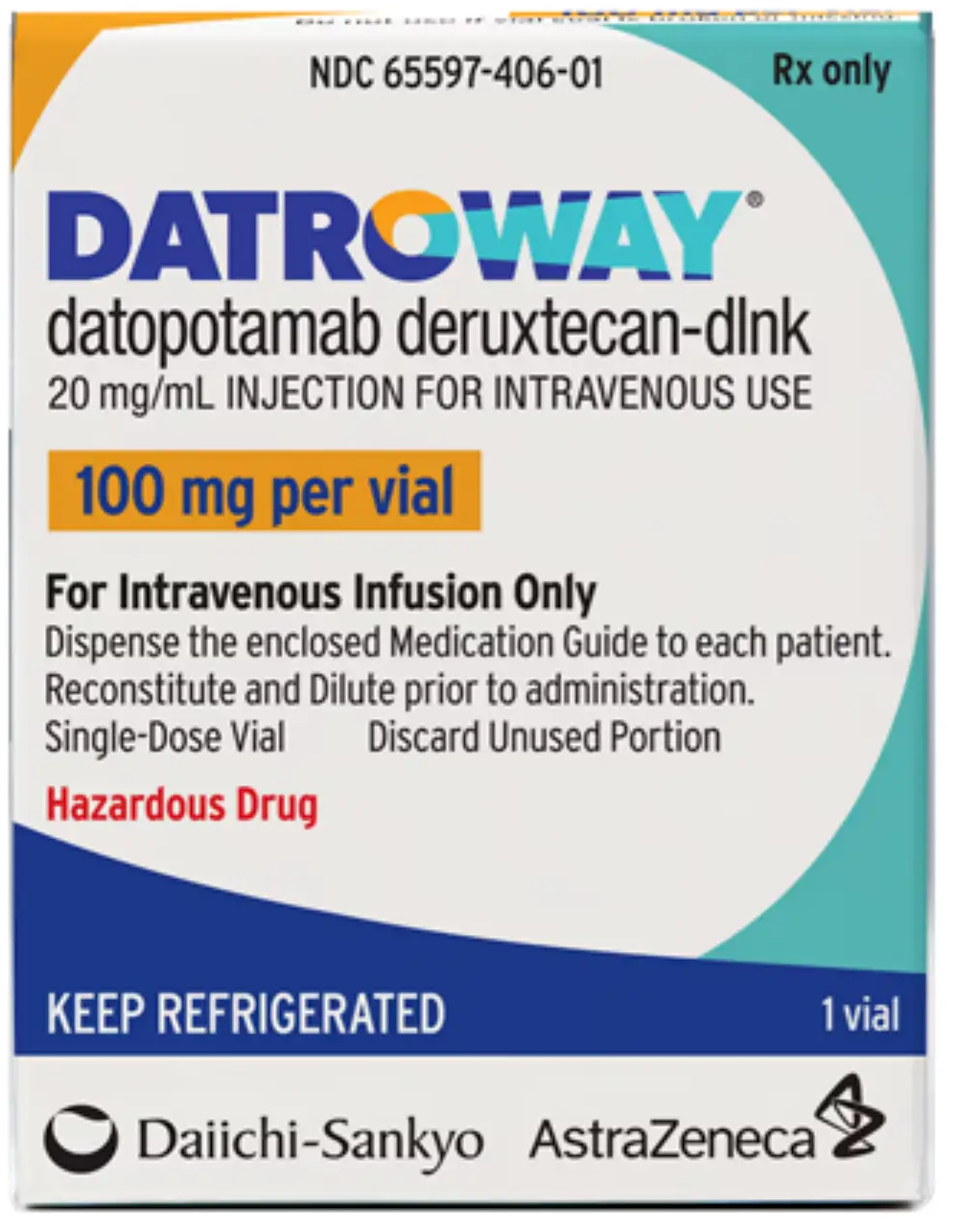Datopotamab Deruxtecan Datroway、德达博妥单抗
Dedabrocitinib is a targeted therapy used primarily to treat specific types of cancer. It precisely targets a specific protein on the surface of tumor cells, inhibiting cancer cell growth or inducing apoptosis. This prescription drug requires strict adherence to a physician’s instructions, and a treatment plan tailored to the patient’s specific circumstances.
I. Mechanism of Action
Targeting the DLL3 protein: Dedabrocitinib targets tumor cells expressing DLL3 (Delta-like protein 3), which is common in neuroendocrine tumors such as small cell lung cancer (SCLC).
Antibody-drug conjugates (ADCs): Combining an antibody with a cytotoxic drug, they deliver chemotherapy to the tumor site, minimizing damage to normal cells.
II. Indications
Small cell lung cancer: Indicated for second- or third-line treatment of advanced or metastatic small cell lung cancer, particularly for patients whose disease has relapsed after conventional chemotherapy.
Other neuroendocrine tumors: Currently in clinical trials, with potential expansion into other cancer types with high DLL3 expression. III. Medication Precautions
Side Effect Management:
Common reactions include fatigue, nausea, and thrombocytopenia.
Serious side effects may involve bone marrow suppression or pulmonary inflammation, requiring regular monitoring of blood counts and imaging studies.
Contraindications and Interactions:
Contraindicated in patients with allergies to the drug components.
Dose adjustment is required when used in combination with immunosuppressants or liver enzyme inducers.
IV. Instructions for Use
Strictly follow physician’s instructions: The dose and duration of treatment should be adjusted dynamically based on the patient’s constitution, disease progression, and side effects.
Medical Guidance: Pre-treatment genetic testing (such as DLL3 expression levels) is required to ensure compliance with the indications. Dyspnea or persistent fever during treatment should be sought immediately.
Dedabrocitinib offers a new treatment option for patients, but its efficacy and safety still require individualized evaluation. In clinical practice, the benefits and risks must be balanced, and multidisciplinary care recommendations must be adhered to.
See More
Share:
Products
Our offers
Health Classification
Let us work together to protect precious health




























